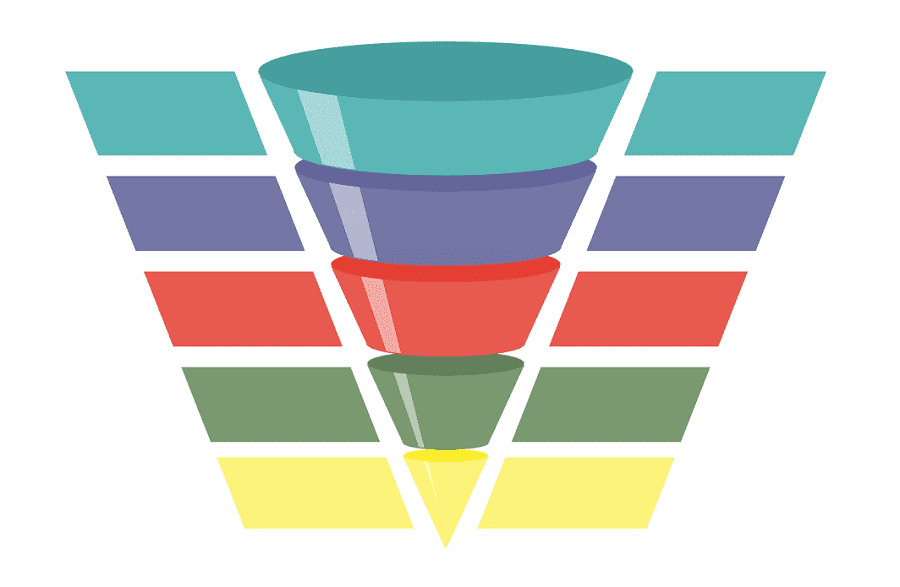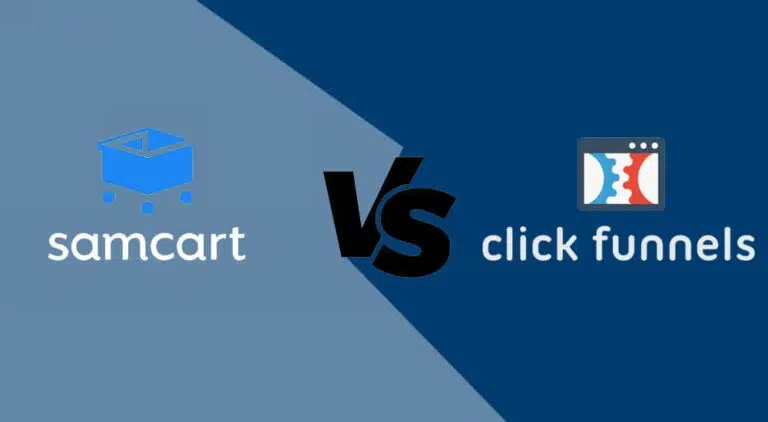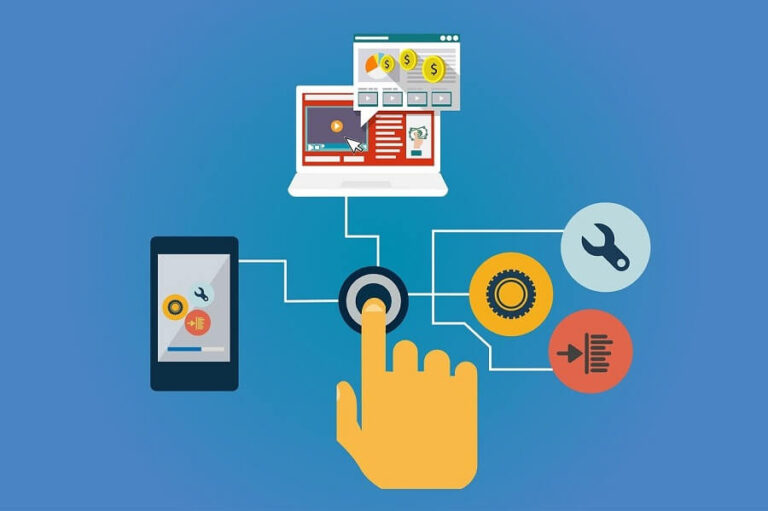If you are selling products online, you have a sales funnel. A sales funnel is a process that includes collecting leads, educating them about your product, and following up until they buy from you. The process does not stop here; it helps you retain customers for a longer period and creates repeat customers for your other products or services.
Sales funnels are a new concept and popularized by market guru Russell Brunson, who developed his empire based on a sales funnel software that is known as ClickFunnels.
You might wonder about this term, but I hope that, after reading this post, you won’t have any problems understanding the sales funnel and its elements and how to use it to increase your sales.
Grab a glass of water as this is a long post!
It is painful to miss a sale, particularly when you attract the audience on your landing page, they browse it and then leave without converting.
Consider another case.
Let us say that a visitor purchases a product from you. What is the guarantee of their next purchase? How will you ensure that the buyer buys again from you?
The answer to these questions is “use a sales funnel.”
What is a Sales Funnel?
A sales funnel is a process that helps a potential visitor go through a pleasant buying process. It converts visitors into leads, and then into long-term customers.
In simple words, it is the steps that your visitors go through to become lifelong customers.
The sales funnel’s goal is not a single sale, but to create repeat customers with lifetime value. So, increasing the effectiveness of your sales funnel should be at the top of your sales priority.
How Sales Funnels Affect Sales
A sales funnel is a litmus test of your business. It shows the strength and opportunities for your business.
A sales funnel can help you and your organization in the following ways:
It fills the Gap between Marketing and Sales. A visitor can have many questions before making the purchase, and the sales funnel provides answers to all these questions and fills the gap between marketing and sales. They won’t be left stranded at any point in their buying process.
It increases Brand Recognition and Customer Loyalty. A sales funnel collects leads, nurtures and educates them about their problem, and provides a solution. It creates a bond between you and your clients. This makes your brand trustworthy, and clients will decide to buy from you and keep returning for more purchases.
It allows you to focus on hot leads Not all leads end up as buyers. A good funnel helps you achieve more from all your leads because you target high-quality prospects and warm up unresponsive leads through emails.
It tracks sales metrics. Monitor the metrics for making better data-driven decisions. You will understand your audience better and can plan your future product development and marketing strategy based on this data.
What are the Sales Funnel Stages?

Prospects pass through different stages from the time they hear about you until they buy. It is a multi-stepped strategy to convert a cold visitor into a customer. Building the sales funnel requires relationship-building activities at different stages.
Most visitors don’t buy on the first visit to your website. It just takes some time.
Building a sales funnel requires effort, but the results are long-lasting. You need to design lead magnets, pop-up forms, landing pages, products, shopping carts, etc. and connect them together.
You might think building a sales funnel is complex, but it is not. These days building a sales funnel is easy with the help of sales funnels platforms such as ClickFunnels, Kartra, and GrooveFunnels.
Now we come to the four stages of a sales funnel:
- Awareness
- Interest
- Decision
- Action
1. Awareness
This stage is often referred to as the “attention stage.” At this stage, you will target visitors who are not aware of your brand or product.
You can increase the awareness of your business with the following tools:
Facebook and Instagram ads: Social media ads are an excellent tool for creating awareness, and they are a powerful tool to reach targeted audiences.
Facebook and Instagram ads are cheaper, and they can help you increase your brand awareness.
Google Ads: Google search ads would help your business reach targeted audiences who are searching for the products or services you offer.
Google ads are costly, but they convert well. If you have a budget and high-paying product, you must go for Google ads.
Landing page: A landing page is a page where a visitor lands for the first time and sees your product. A landing page is a critical element in a sales funnel and contains important product information and lets the visitor know how the product can solve their problem.
It also includes the call-to-action (CTA) that allows visitors to buy your product, services, submit email addresses, etc.
Sign-up form: Sign-up forms let your visitors convert into subscribers. You can use different forms for this purpose, such as pop-up, embedded, and lightboxes. Once you get their email address, you can send automated emails to educate them about the product and how your product can solve their problems.
2. Interest
Publishing valuable content and communicating with your audience. This will generate interest in your audience about you and your products.
You will find many of your contacts are not interacting with your messages. You can segment them and create separate automations to engage such contacts.
Some useful tools for this stage are:
Email marketing: You need to communicate with your audience regularly. Create email automation to educate them and introduce your products.
The content must provide value as it would keep customers returning and help new prospects make better purchase decisions. Customers must know they are making the right choice and getting value for their money.
Engagement score: Keep a close watch on the engagement score of your audience. The engagement score shows the interactions of your contact with your emails.
Once you understand your audience, you can segment them according to their preference and send hyper-targeted emails.
Push notifications: With this tool, you can stay connected with your website’s visitors. This tool does not require any email addresses. So sending messages to your website’s visitors would be swift and hard to miss.
Webinars: This is another powerful tool that you don’t want to miss when communicating with your audience.
Identify the pain points of your audience and hold webinars to provide information about their problems and how you can help them solve their problems. Consider using Q&A, surveys, and chats during the webinar as it would aid interactivity.
For those who did not attend the webinar, send recorded videos and other materials that would give them more insight into your offer.
Facebook Pixels: If you are using Facebook ads, this is a useful tool. This tool lets you track the visitors on landing pages.
You would identify people’s preferences and develop remarketing campaigns based on their behavior on your landing page.
3. Decision
In this stage, your prospect needs to decide. Copywriting, telling stories, and link-clicking would not suffice at this point; you need reviews and testimonials from customers. You can also use Facebook and Google re-targeting ads to increase their awareness and interest that will help them make buying decisions. Use re-targeting ads. A testimonial from an authority helps convince people to make that decision to buy.
You can use Robert Cialdini’s six principles to convince the audience to buy from you:
Principle of Reciprocity: This is you delivering value to your audience through the emails. Your audience will know you could help them solve their problems, and then they will convert.
Principle of Commitment and Consistency: Commitment and consistency are great marketing tools. Apply it to your online business. Provide consistent support, services, and buying experience.
Principle of Liking: Stories are a powerful tool. Leave no stone unturned in crafting an interesting story. When people like your stories, they would want to purchase from you.
Principle of Authority: Authority helps convince people to buy your product. When respected people in your industry or scientific explanations back your offer, the audience will trust in your product and more visitors will convert to customers. So, seek authority and present it in your offer.
Principle of Consensus: If people are talking about your product or service on social media platforms, include that in your offer.
Principle of Scarcity: You can outsmart people by using the principle of scarcity. Some headlines that always catch people’s attention are: ‘limited offer,’ ‘discount expires’ etc.
These are captions that make visitors run for your offer.
4. Action
At this stage, your audience understands your product will solve their problem. Sending sales emails would convert contacts to customers. You can employ the remarketing tool. This tool helps in tracking visitors that have come to your landing page at one point. You track them and send marketing emails. Defining your custom audience and customized ads based on the pages they have visited increases the conversion.
How Do I Build a Sales Funnel?
You should have a well-defined marketing strategy in order to develop a sales funnel.
The following steps will ensure you have the right sales funnel:
#1: Identify your target audience
The better you know your audience, the more effective your sales funnel will be. You will not be able to sell your product to everyone, so you must identify your target audience. The mistake some online marketers make is trying to sell to everyone, avoid that mistake.
#2: Create your buyer persona
A single sales funnel will not work for all buyers because they have different buying reasons and patterns. Hence, create different sales funnels for your audiences that would fit their experiences.
#3: Capture Your Audience
Your sales funnel is effective when you bring people into it. Publish valuable content and push it in front of your target audience.
The content can be infographics, videos, or blog posts. Paid ads would be helpful in bringing the audience to your landing pages.
#4: Build Great Landing Pages
The landing page is the place visitors will arrive when they click on your ad. It should be simple and contain the precise information that would compel your visitors to click the call-to-action (CTA).
A vivid CTA would tell them what you expect them to do on the landing page. Do not overcrowd the landing page with too many details and fancy elements.
#5: Strategize effective traffic generation methods
There are three ways to get the traffic: paid traffic, cold outreach, and free traffic. Paid traffic allows you to bring visitors to your website as soon as you start your campaign. One disadvantage of paid traffic is that you stop getting new leads when you stop paying. Cold outreach helps inactive leads in your email list.
You can create separate workflow automation for them to make them active. Content marketing and email marketing is the best form of marketing that can bring free traffic to your site. You would need to spend on tools that would help you optimize your site content for search engines.
#6: Develop an Email Drip Campaign
Keep sending the emails to your audience. Do not bombard them, one or two emails per week should suffice. Provide useful content, educate them about the problem, and explain how your product can solve the problem they are facing.
You can also offer some push at the end of your drip campaign.
#7: Keep in Touch
You have to convert your existing customers to become lifetime customers. Keep communicating with them even after they have bought a product from you. Appreciate their purchases, offer bonuses, and invite them into your social media sphere.
How do I measure the Effectiveness of my Sales Funnel?
You must measure the effectiveness of your sales funnel so you can tweak it for better performance.
You can measure the effectiveness of your sales funnel by tracking the conversion rate. For instance, track the number of people that sign up for your email subscription after they click your ad.
At each stage of the sales funnel, ask questions such as:
- Is my content good enough to convince them to convert?
- Does my audience trust me enough to give their contact information?
- Are the marketing efforts and email campaigns closing sales?
- What is the percentage of returning customers?
These questions will help you find bottlenecks in your sales funnel.
Do I Need to Optimize my Sales Funnel?
An un-optimized sales funnel is a loss of business. You need to optimize your sales funnel constantly. You can use an analytic tool to detect where your visitors are focusing and clicking the most.
A heat map can be helpful in this case. This map shows where people click the most on your landing page. You can also use scroll maps, confetti maps, list reports, and overlay reports to get useful information about your landing pages.
How do I Optimize My Sales Funnel?
Find the best and least performing landing pages using the tools discussed above.
Track the impact of any changes. If the change does not make a difference, test with a different pattern.
Sometimes, a piece of content does not produce the results you expect; just change it.
Ensure the offer and CTA are the same as the Facebook Ad or content on your blog post and other sales funnel platforms.
Test the headline, copy, images, and the CTA through A/B testing. Find which offer performs best. For instance, free shipping might be preferred to a 5% discount.
When you give your customers the right content and offer, they will not look elsewhere for any reason.
Conclusion
A sales funnel requires many stages and processes to make a sale occur. Creating an efficient sales funnel takes time and resources. Build the sales funnel and keep optimizing it continuously.
Do you use a sales funnel for your business? If you do, please share your experience with developing and optimizing the sales funnel.




